I’m a big fan of Vitamin C and citrus fruits in general. It’s now that time of year that oranges are being harvested. You can hardly drive down the road without seeing one field or another being depleted of its nutritious stock, piled high on the side of the road, and left naked and alone to bear out the remaining cold of the winter with nought but a few leaves to accompany it until the Summer shall once again bear down upon it and bring forth new fruit next winter.
Mrs. Expat and I, indeed, stopped by the side of the road where such harvesting was going on and, being the curious type, ended up buying approximately 40kg of [hanzi]柳ä¸[/hanzi] ([pinyin]liu3ding1[/pinyin]). These were small, hard to peel, but juicy and sweet. We ended up giving a lot away to friends since we had simply so much of them (We still have some!), but have relegated the rest to juicing as they are simply too hard to peel and not worth the effort. Much better to cut them up and squeeze them for an early morning jolt of fructose.
Most Taiwanese will tell you that [hanzi]柳ä¸[/hanzi] ([pinyin]liu3ding1[/pinyin]) are “tangerines.” However, this differed from what I knew about oranges and tangerines. This got me thinking about the differences and I simply had to investigate this further.
According to Wikipedia,
The tangerine (Citrus × tangerina) is an orange-coloured citrus fruit which is a variety of the Mandarin orange (Citrus reticulata). Tangerines are smaller than most oranges, and are usually much easier to peel and to split into segments. The taste is often less sour, or tart, than that of an orange.
Armed with this knowledge, I headed off to the fruit market to do some research. Here is what I came home with:
From left to right (and largest to smallest) I have: [hanzi]美人柑[/hanzi] ([pinyin]mei3ren2gan1[/pinyin]), [hanzi]樋柑[/hanzi] ([pinyin]tong1gan1[/pinyin]), [hanzi]海梨[/hanzi] ([pinyin]hai3li2[/pinyin]), [hanzi]茂谷[/hanzi] ([pinyin]mao4gu3[/pinyin]), [hanzi]橘å[/hanzi] ([pinyin]ju2zi4[/pinyin]), and [hanzi]柳ä¸[/hanzi] ([pinyin]liu3ding1[/pinyin]).
I decided I would take each of these in turn and take some notes to talk about the experience of each, and write down some benefits and disadvantages.
First up was the [hanzi]美人柑[/hanzi] ([pinyin]mei3ren2gan1[/pinyin]).
It peeled very easily, the rind coming off in large chunks. There were no seeds and it was very sweet. It is characterized by the large “nipple” on top and is very juicy. It cost approximately NT$20 for one. I believe these are what Americans would refer to as “tangerines.”
Next up were the [hanzi]樋柑[/hanzi] ([pinyin]tong1gan1[/pinyin]) and [hanzi]海梨[/hanzi] ([pinyin]hai3li2[/pinyin]). I somehow forgot to take pictures of the latter, but it’s alright because both were very similar.
You’ll notice that outwardly, they differ in that the [hanzi]海梨[/hanzi] ([pinyin]hai3li2[/pinyin]) is much oranger and also has a nipple, whereas the [hanzi]樋柑[/hanzi] ([pinyin]tong1gan1[/pinyin]) is lighter and rounder. Both of these were a bit harder to peel, starting off with small chunks but becoming easier as it went along. The segments of both come apart quite easily, but have some seeds and were much dryer – not nearly as juicy as the [hanzi]美人柑[/hanzi] ([pinyin]mei3ren2gan1[/pinyin]). The [hanzi]海梨[/hanzi] ([pinyin]hai3li2[/pinyin]) was NT$17 while the other was NT$19. It would be hard to give an edge to either or to distinguish one from the other. MDBG is not much help as it recognizes neither, but apparently the [hanzi]樋柑[/hanzi] ([pinyin]tong1gan1[/pinyin]) would be a type of tangerine ([hanzi]柑[/hanzi] apparently means “large tangerine”) whereas the other would be a type of orange.
Next was the [hanzi]茂谷[/hanzi] ([pinyin]mao4gu3[/pinyin]).
This one was characterized by having a very thin rind – much thinner than any of the others. It cost NT$20 and peeled very easily, exposing hard to separate, but soft, juicy segments. There were more seeds in this one than the others – at least one seed in each segment, but it was very sweet. Overall, I rank this one rather highly.
Next came the [hanzi]橘å[/hanzi] ([pinyin]ju2zi4[/pinyin]), which is my absolute favorite.
Correct me if I’m wrong, but this is what Americans would normally call a “mandarin orange.” It’s rather small, but peels extremely easily (the skin nearly falls off) and the segments practically fall apart in your hands. The thin rind gives way to extremely juicy, sweet segments that still carry many thin, white strands of rind. There are seeds in these, at least one per segment, but it’s worth the effort to get through them as these are simply utopia in your mouth. The local fruit stand was having a sale: 10 for NT$30 and the 11th one was free. I bought 10 the first round to try them out and went back to buy 20 more. This is what I’ll be buying from now on.
I hesitate to include the last one, [hanzi]柳ä¸[/hanzi] ([pinyin]liu3ding1[/pinyin]), because, as stated, it simply can’t compare to the others. However, I did make an attempt to peel and rate it.
As you can see, it can barely be described as “peeling” at all, as in the process I managed to damage the soft segments inside and not make much headway in exposing the fruit after tearing off several tiny chunks of rind. It is, however, very juicy, but also has a lot of seeds. This is why I do not recommend you buy these to eat. If you want to squeeze them for fresh orange juice, however, these are the ones you want.
As I said, most Taiwanese would call these “tangerines,” but they seem much more orange-like to me (given the Wikipedia definition of tangerines). Below I have ranked my favorites in order.
- [hanzi]橘å[/hanzi] ([pinyin]ju2zi4[/pinyin]) – Mandarin Orange
- [hanzi]美人柑[/hanzi] ([pinyin]mei3ren2gan1[/pinyin]) – A large tangerine?
- [hanzi]茂谷[/hanzi] ([pinyin]mao4gu3[/pinyin]) – Tangerine or orange?
- [hanzi]樋柑[/hanzi] ([pinyin]tong1gan1[/pinyin]) – A type of tangerine?
- [hanzi]海梨[/hanzi] ([pinyin]hai3li2[/pinyin]) – A type of orange?
Tied for 3rd and 4th place:
As stated, the last one I don’t include with the others as it simply doesn’t stack up.
- [hanzi]柳ä¸[/hanzi] ([pinyin]liu3ding1[/pinyin]) – A small orange?
So there you have it. An unofficial guide to Taiwanese oranges and tangerines. I’m sure there are more varieties out there and I would love to hear about them and the differences between oranges and tangerines. MDBG dictionary isn’t being entirely helpful in sorting out which is which according to the Chinese names (which may have some Taiwanese influence), so if anyone could help sort out the differences, I’d appreciate it.
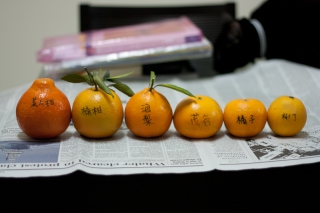
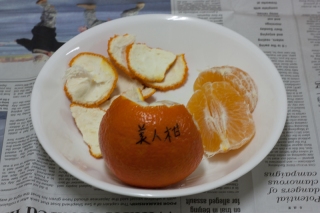
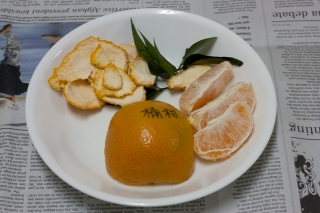
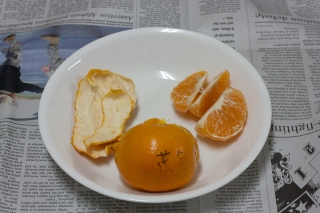
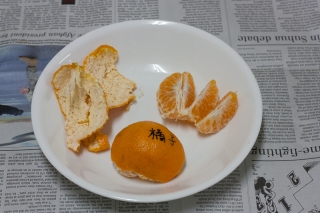
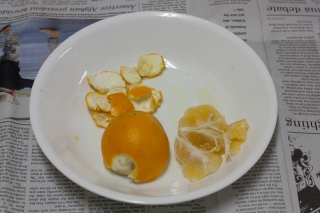
Leave a Reply